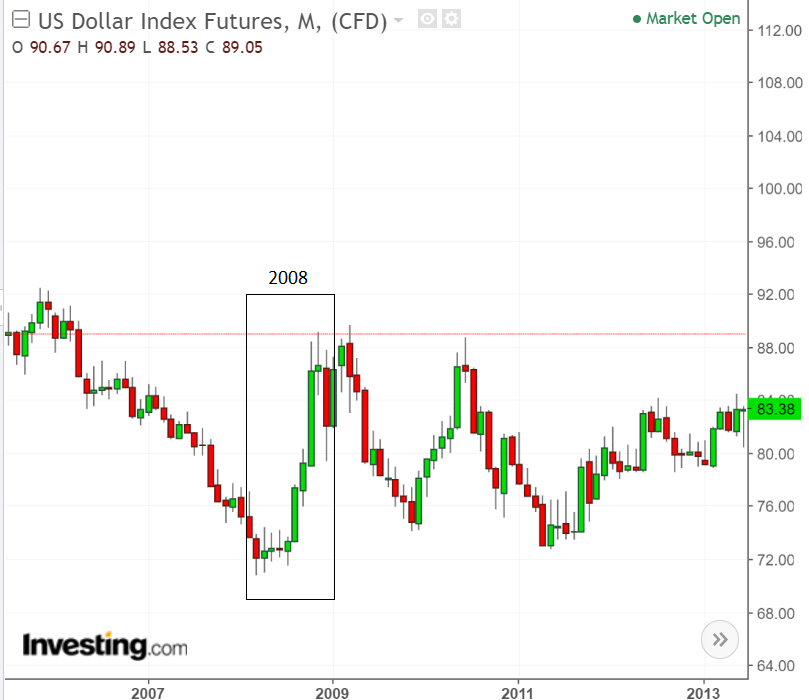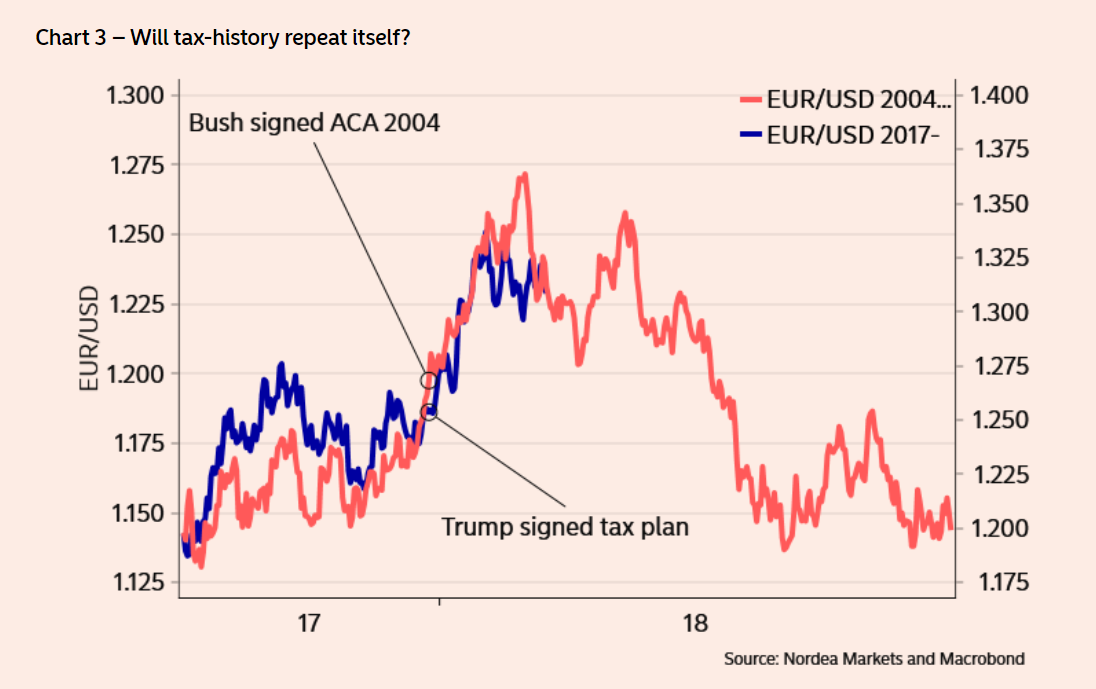US Dollar Could Gain Scarcity Value as US Treasury's Need for Financing Spikes
- USD could be set to rise in weeks ahead on scarcity value
- Massive US Treasury financing demand is 'hoovering' up Dollars
- Repatriation flows also creating USD demand in global financial system

© Nomad Soul, Adobe Stock
The US Dollar could strengthen over the next few months as the global economy witnesses a shortage of Dollars owing to a sharp increase in US government borrowing and repatriation flows.
In an uncharacteristically quiet week for the markets, the stand-out event is the US government stretching out an open hand to local and international debt markets for circa $300bn so that it can refinance maturing debts and finance new ones, owing to recent legislation entitling individuals and companies to billions of tax cuts.
Sudden spikes in demand for Dollars from the US Treasury can cause scarcity in the financial system which in turn pushes up the value of the currency, according to Martin Enlund, chief FX strategist at Nordea Bank.
Higher-than-anticipated borrowing by the US Treasury will probably 'hoover' up an excess liquidity of Dollars in the system, he argues.
The chart below shows the high correlation between Dollar-scarcity and the value of the Dollar by comparing excess liquidity with the Dollar Index (DXY).
At the end of 2017 Nordea forecast the Euro-to-Dollar exchange rate would retrace back towards 1.15 by the end of Q1 because of Dollar-scarcity, however, this has not happened and the exchange rate has stubbornly maintained its range in the early 1.20s.
But any sudden increase in demand for Dollars this week, and coming weeks, could weigh on the exchange rate all other things being equal.
The massive 300bn debt issuance by the Treasury is the largest since the financial crisis in 2008 when the US government had to borrow emergency funds to keep the financial system solvent.
Looking at the chart below, showing the performance of the US Dollar during 2008, it is notable how much the Dollar Index rose in 2008, steeply rising for almost the whole year - suggesting there may have been an impact from increasing US government debt issuance.
Apart from lack of liquidity, several other factors could also translate into Dollar strength as a result of the 300bn loan.
The current share of US debt owned by foreigners stands at 46% and assuming a similar level of take up during the current round of issuance, about half the demand could come from abroad.
This ought to create exchange rate demand for Dollars from foreign buyers wishing to exchange their local currencies to buy US Treasuries.
China, the US's biggest lender, tends to use existing Dollar reserves to purchase US debt, so the impact on USD may be muted from its contributions, but it is still the case that a sizeable share of the debt will be bought by non-Chinese investors and foreign private investors who will need to exchange their local currencies for Dollars.
In addition, China may not be as generous as it has been in the past given Trump's imposition of trade tariffs which could be seen as 'biting the hand which feeds him'.
There will also be less demand from the US Federal Reserve, which used to buy treasuries when it was practicing quantitative easing.
The shortfall in demand may be filled by foreign investors with a concomitant increase in demand for USD.
Of course, a slump in demand could provide an offsetting headwind for the Dollar since it will drive up borrowing costs. This, in turn, would be seen as extremely negative for the US economy and ultimately negative for the Dollar longer-term
LIBOR-OIS Spreads Widen "Severely" as Dollar's Become Scarcer
A disproportionate rise in the London Interbank Offered Rate (LIBOR), which is the rate commercial banks lend to each other can be a sign of shrinking liquidity, especially when it is not backed up by rising inflation expectations.
Inflation expectations can be gauged using the price of Overnight Index Swaps (OIS) as a swap is a cost of exchanging a loan with a fixed interest rate for a floating rate, so it incorporates inflation expectations.
When LIBOR rises but OIS doesn't it suggests banks are straining to lend due to liquidity and this seems to be the case recently.
"LIBOR-OIS spreads have recently widened severely, as a result of fewer USDs floating in the international financial system over the next quarter," says Nordea Market's Enlund.
The reason he gives is increased USD demand from US foreign subsidiaries repatriating local currency cash to the US to take advantage of the tax rate holiday.
In 2004 when President Bush enacted similar repatriation incentives the Dollar fell initially but then rose will the same thing happen this time around?
"Judged from the 2004-2005 example, where George Bush signed ACA, the initial reaction of corporate tax reforms are USD-negative, as they tend to spur the twin-deficit debate. Once, the dust settles money starts flowing back to the US, which helps the USD regain its footing. Are we about to see tax-history repeat itself? Then it will be another potential USD positive," says Enlund.
Nordea's Enlund notes a remarkable correlation on a lagging basis between LIBOR-OIS spreads and the Dollar Index (DXY) which is illustrated in the chart below.
"Recently, the LIBOR-OIS spread has been leading the DXY-index by roughly 2 months," they say, which if it continues suggests massive upside potential for the Dollar in the two months ahead. If the lagging correlation continues, "it is another reason to believe in a stronger USD," says the strategist.
LIBOR-OIS Spread Peaking?
Investors should beware of not getting too carried away and 'mortgaging the farm' to make an outsized bet on the USD rising.
LIBOR/OIS spread may be peaking - the spread has now widened to 59 basis points - but Eugene Leow, rates strategist at DBS Economics, says the move could start to stabilise.
"There are some early signs that Libor-OIS spread may be stabilising. The recent 4W auction drew reasonable to demand a bid-to-cover ratio of 2.71 (close to recent averages). Moreover, the generic 1M T-bill rate has also been grinding lower. In any case, tightening EUR and JPY cross-currency basis swaps are indicating more than ample supply of USD," says Leow.
Nevertheless, even a stabilisation leaves sizeable spreads and ample space for the Dollar to play catch-up.
Get up to 5% more foreign exchange by using a specialist provider to get closer to the real market rate and avoid the gaping spreads charged by your bank when providing currency. Learn more here.









